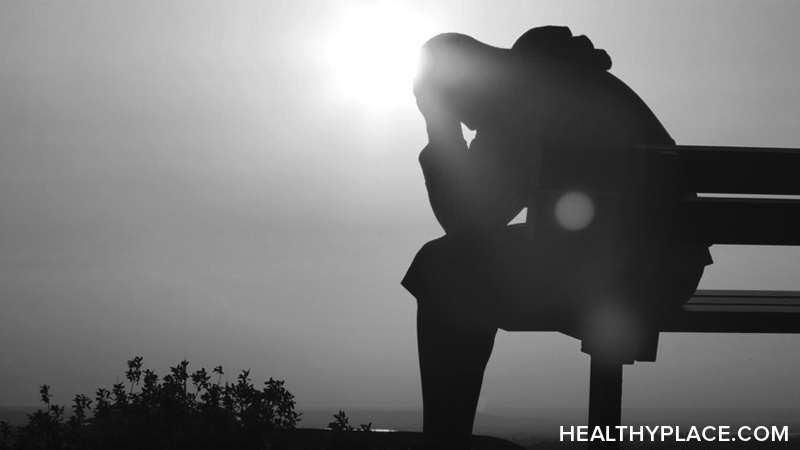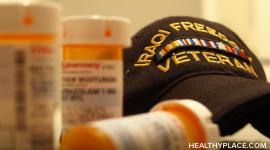PTSD Symptoms and Signs of PTSD

Posttraumatic stress disorder (PTSD) signs and symptoms can severely impact day-to-day life. It is important to get PTSD help (support groups, family, etc.) and posttraumatic stress disorder treatments as soon as possible. Posttraumatic stress disorder is a mental illness that develops after experiencing, or being exposed to, an event that physically harms or threatens to physically harm someone. This harm, or threat of harm, may be directed towards the sufferer or another individual.
Posttraumatic stress disorder (PTSD) symptoms include the persistent reliving of the trauma, avoidance of any place that is a trauma-reminder, trouble sleeping and many others. PTSD symptoms can be terrifying and life-altering, as the person tries to avoid any situation that may bring about severe anxiety. This avoidance can make a person's world much smaller and allow them to do fewer and fewer things as they fear the re-emergence of their posttraumatic stress disorder symptoms. They may even turn to drugs to numb the psychological pain caused by their symptoms (Living with PTSD Can Be a Nightmare).
Prior to 1980, symptoms of PTSD were seen as a personal weakness or character flaw and not as an illness. It is now known, however, that posttraumatic stress disorder symptoms are caused by physical changes in the brain and not due to a person's character. If you wonder if you have PTSD, take our free online PTSD test.
Diagnostic Symptoms of Posttraumatic Stress Disorder
Posttraumatic stress disorder is diagnosed using the latest version of the Diagnostic and Statistical Manual of Mental Disorders (Note - Read the DSM-5 updated PTSD criteria for adults and children at PTSD in the DSM-5). In order to receive a PTSD diagnosis, symptoms must meet the following criteria:1
- The person must have:
- Experienced or witnessed an event involving serious injury, death or a threat to someone's physical well-being
- A response involving helplessness, intense fear or horror
- The person must re-experience the event. This may be through dreams, flashbacks, hallucinations or intense distress when confronted with cues that symbolize the traumatic event.
- Three of the following post-traumatic stress symptoms must be present:
- Avoidance of thoughts, feelings or conversations that are associated with the event
- Avoidance of people, places or activities that may trigger recollections of the event
- Trouble remembering important aspects of the event
- Significantly diminished interest or participation in important activities
- Feeling of detachment from others
- Narrowed range of affect (reduced visible emotions)
- Sense of having a foreshortened future
- Two of the following post-traumatic stress symptoms must be present:
- Difficulty sleeping or falling asleep
- Decreased concentration
- Hypervigilance (an over-awareness to, searching for, possible dangers)
- Outbursts of anger or irritable mood
- Exaggerated startle response (overly responsive when startled)
- Posttraumatic stress symptoms must be exhibited for more than one month
- Posttraumatic stress symptoms must cause clinically significant distress or impairment of functioning
Signs of PTSD
While the diagnostic criteria for post-traumatic stress disorder are quite clear, there are additional signs that may suggest PTSD. Signs of PTSD include:2
- Self-destructive behavior such as substance abuse
- Feeling emotionally numb
- Difficulty in maintaining close relationships
- Guilt or shame
- Hearing or seeing things that aren't there
- Serving in the military in a war zone
People with PTSD are also at greater risk for:
- Panic disorder
- Agoraphobia
- Obsessive-compulsive disorder
- Social phobia, social anxiety disorder
- Specific phobias
- Major depressive disorder
- Somatization disorder (physical symptoms with no medical origin)
- Suicide
The signs of PTSD may come and go but if they are impairing daily functioning, they should be assessed by doctor or mental health professional specializing in PTSD treatment. Those who receive treatment for their PTSD symptoms heal almost twice as quickly as those who don't (How Long Does PTSD Last? Does PTSD Ever Go Away?).
APA Reference
Tracy, N.
(2021, December 15). PTSD Symptoms and Signs of PTSD, HealthyPlace. Retrieved
on 2024, June 20 from https://www.healthyplace.com/ptsd-and-stress-disorders/ptsd/ptsd-symptoms-and-signs-of-ptsd


